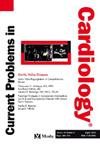her2靶向治疗和心脏毒性:从主要关注到可控风险。
IF 3.3
3区 医学
Q2 CARDIAC & CARDIOVASCULAR SYSTEMS
引用次数: 0
摘要
her2靶向治疗显著改善了her2阳性乳腺癌患者的预后,但其潜在的心脏毒性仍然是一个关键的临床问题。早期的试验报告了心功能障碍的高发率,特别是与蒽环类药物的同时使用,促使了强化心脏监测策略的发展。然而,新出现的证据表明,大多数心脏毒性事件是无症状的,可逆的,很少需要永久停止治疗,特别是使用新的药物,如抗体-药物偶联物。临床决定因素包括基线左心室功能障碍、年龄、合并症和联合化疗,而生物标志物和先进的成像是早期发现的有希望的工具。从机制上讲,HER2抑制会破坏心肌细胞存活途径和线粒体功能,但这些变化与临床意义上的心力衰竭之间的关系仍不完全明确。包括SAFE-HEaRt在内的近期研究表明,在心脏肿瘤学监督下,适当的心脏保护干预措施通常可以安全地继续进行HER2治疗。然而,在风险分层、长期监测以及将生物标志物和成像纳入常规实践方面仍然存在差距。本文严格检查了HER2治疗诱导的心脏毒性的病理生理学、临床危险因素和管理,最终认为通过适当的监测和多学科护理,心脏毒性不应排除最佳的肿瘤治疗。本文章由计算机程序翻译,如有差异,请以英文原文为准。
HER2-targeted therapies and cardiotoxicity: From major concern to manageable risk
HER2-targeted therapies have dramatically improved outcomes for patients with HER2-positive breast cancer, but their potential for cardiotoxicity remains a critical clinical concern. Early trials reported high rates of cardiac dysfunction, particularly with concomitant anthracycline use, prompting the development of intensive cardiac monitoring strategies. However, emerging evidence suggests that most cardiotoxic events are asymptomatic, reversible, and rarely require permanent treatment discontinuation, particularly with newer agents such as antibody–drug conjugates. Clinical determinants include baseline left ventricular dysfunction, age, comorbidities, and combination chemotherapy, while biomarkers and advanced imaging are promising tools for early detection. Mechanistically, HER2 inhibition disrupts cardiomyocyte survival pathways and mitochondrial function, but the relationship between these changes and clinically meaningful heart failure remains incompletely defined. Recent studies, including SAFE-HEaRt, demonstrate that HER2 therapy can often be safely continued under cardio-oncology supervision with appropriate cardioprotective interventions. Nevertheless, gaps persist in risk stratification, long-term surveillance, and the integration of biomarkers and imaging into routine practice. This article critically examines the pathophysiology, clinical risk factors, and management of HER2 therapy-induced cardiotoxicity, ultimately arguing that with proper monitoring and multidisciplinary care, cardiotoxicity should not preclude optimal oncologic treatment.
求助全文
通过发布文献求助,成功后即可免费获取论文全文。
去求助
来源期刊

Current Problems in Cardiology
医学-心血管系统
CiteScore
4.80
自引率
2.40%
发文量
392
审稿时长
6 days
期刊介绍:
Under the editorial leadership of noted cardiologist Dr. Hector O. Ventura, Current Problems in Cardiology provides focused, comprehensive coverage of important clinical topics in cardiology. Each monthly issues, addresses a selected clinical problem or condition, including pathophysiology, invasive and noninvasive diagnosis, drug therapy, surgical management, and rehabilitation; or explores the clinical applications of a diagnostic modality or a particular category of drugs. Critical commentary from the distinguished editorial board accompanies each monograph, providing readers with additional insights. An extensive bibliography in each issue saves hours of library research.
 求助内容:
求助内容: 应助结果提醒方式:
应助结果提醒方式:


